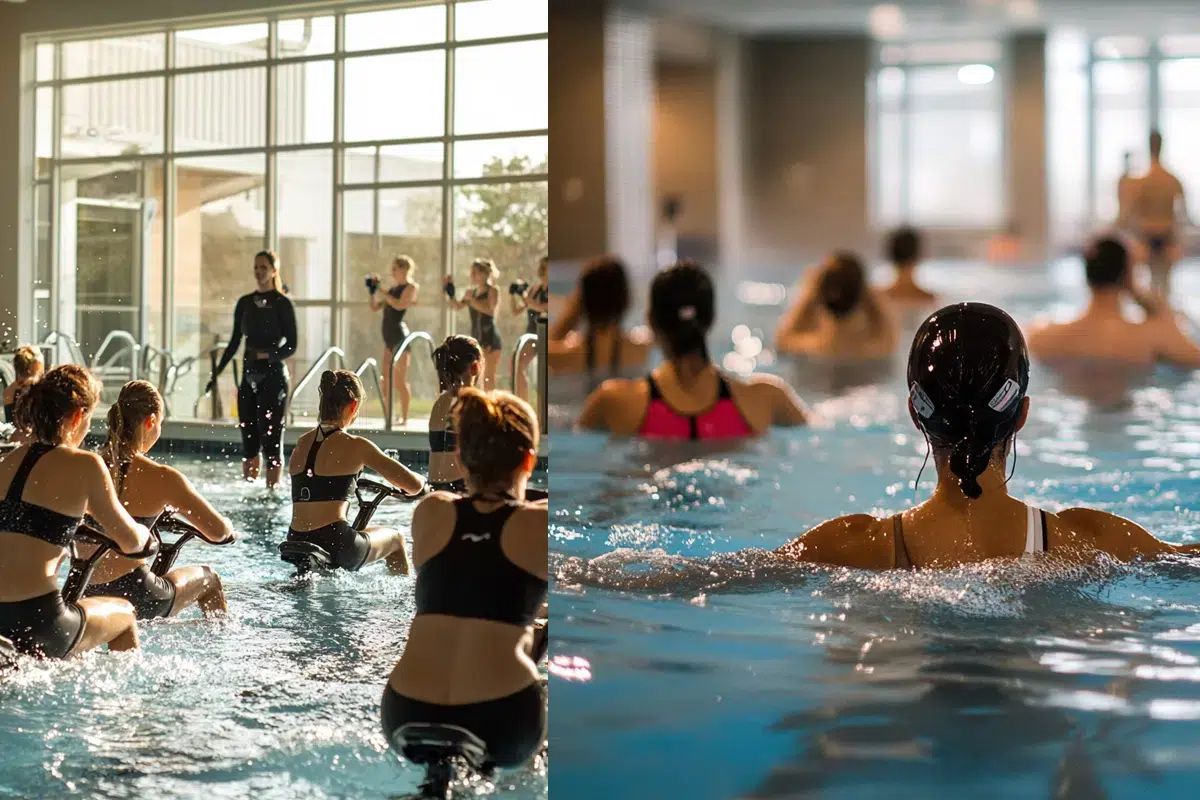Curious about discovering the benefits of yoga but uncertain about where to start? Yoga is an ancient practice that offers a multitude of styles, each with its own advantages and attracting different profiles. Whether it’s to improve flexibility, reduce stress, or simply find a new balance, there is a type of yoga that will meet your needs. This article guides you through the different types of yoga, their benefits, and who they are suitable for, to help you choose the practice that suits you best. Read on to discover how yoga can transform your life.
The Different Types of Yoga
Hatha Yoga
Hatha Yoga is often considered the most accessible form of yoga. It focuses on basic postures (asanas) and breathing (pranayama). Hatha Yoga sessions are generally slow and gentle, allowing practitioners to familiarize themselves with the fundamentals of yoga. Poses like Downward-Facing Dog (Adho Mukha Svanasana) and Warrior (Virabhadrasana) are commonly practiced to improve flexibility and strength.
- Benefits: Improves flexibility, strengthens muscles, and helps with relaxation.
- Profile: Ideal for beginners and those looking for a calming practice.
Vinyasa Yoga
Vinyasa Yoga is a dynamic practice where postures flow smoothly in synchronization with the breath. Each movement is linked to an inhalation or exhalation, creating a meditative dance. Sequences like Sun Salutations (Surya Namaskar) are typical in Vinyasa and help strengthen the body while improving endurance.
- Benefits: Improves endurance, flexibility, and muscle strength.
- Profile: Suitable for those who enjoy a faster pace and a more physical practice.
Ashtanga Yoga
Ashtanga Yoga is a structured form of yoga with a fixed series of postures, practiced in a specific order. It is rigorous and demanding, promoting discipline and endurance. Practitioners follow the same series of postures in each session, including standing poses, seated poses, and closing postures, such as Lotus (Padmasana) and Head-to-Knee Pose (Janu Sirsasana).
- Benefits: Strengthens the body, improves endurance, and develops discipline.
- Profile: Ideal for those who enjoy structured routines and physical challenges.
Bikram Yoga
Bikram Yoga, or Hot Yoga, is practiced in a room heated to about 40°C with a fixed series of 26 postures. This intense heat helps detoxify the body through sweat and improves muscle flexibility. Poses include one-legged balances, backbends, and stretches like Bow Pose (Dhanurasana) and Triangle Pose (Trikonasana).
Sport The 10 proven benefits of walking daily and practical ways to increase your steps every day
- Benefits: Detoxifies the body, improves flexibility, and cardiovascular endurance.
- Profile: Suitable for those who enjoy heat and seek an intense practice.
Iyengar Yoga
Iyengar Yoga emphasizes precise alignment of postures and often uses props like blocks, straps, and chairs to help achieve correct form. This approach allows practitioners to focus on the precision and depth of each posture. Poses like Tree Pose (Vrksasana) and Bridge Pose (Setu Bandhasana) are commonly practiced.
- Benefits: Improves posture, stability, and understanding of postures.
- Profile: Perfect for those looking to deepen their technique and prevent injuries.
Kundalini Yoga
Kundalini Yoga combines postures, breathing exercises, chanting (mantras), and meditations to awaken the kundalini energy located at the base of the spine. Sessions include specific kriyas (movement sequences) for each aspect of physical and mental well-being. Exercises like Frog Pose (Mandukasana) and Breath of Fire (Kapalabhati) are typical.
- Benefits: Balances the chakras, improves self-awareness, and reduces stress.
- Profile: Ideal for those interested in spirituality and inner energy.
Yin Yoga
Yin Yoga is a slow, meditative practice where postures are held for long periods, usually three to five minutes. This allows working on deep connective tissues and releasing accumulated tension. Poses often include seated forward bends, hip openers, and twists like Butterfly Pose (Baddha Konasana) and Dragon Pose (Utthan Pristhasana).
- Benefits: Improves flexibility, promotes deep relaxation, and balances body energies.
- Profile: Suitable for those seeking a gentle and introspective practice.
Restorative Yoga
Restorative Yoga uses props to support the body in relaxing postures, promoting deep relaxation. Postures are held for long periods to allow the body to completely relax. Poses like Corpse Pose (Savasana) with props and Child’s Pose (Balasana) are often used to induce a state of deep relaxation.
Sport Aquagym or aquabiking: the best water workouts to sculpt your body and burn calories
- Benefits: Reduces stress, improves sleep, and promotes recovery.
- Profile: Perfect for those needing to relax and recover.
Power Yoga
Power Yoga is a dynamic and vigorous form of yoga based on Ashtanga Yoga. It focuses on fast movements and postures that strengthen and tone the body. Sessions often include variations of classic postures to increase intensity, like Warrior Pose (Virabhadrasana) in sequence and hand balances.
- Benefits: Strengthens the body, improves endurance, and aids weight loss.
- Profile: Ideal for those seeking an intense and energizing workout.
Benefits of Each Type of Yoga
Physical Benefits
- Flexibility: Most types of yoga improve flexibility by stretching muscles and connective tissues.
- Strength: Yoga strengthens muscles, particularly stabilizing muscles, through postures that require holding the body’s weight.
- Balance: Yoga postures improve balance and coordination by engaging muscles and reflexes.
Mental Benefits
- Stress Reduction: Breathing exercises and meditation in yoga help calm the mind and reduce stress.
- Concentration: Yoga promotes concentration by encouraging focus on postures and breathing.
- Overall Well-being: Regular yoga practice can improve mood, increase mental clarity, and promote a sense of well-being.
Who Is Each Type of Yoga For?
Profiles Suited to Each Type of Yoga
Sport How to avoid running injuries: 10 essential tips for safer training
- Beginners: Hatha Yoga, Yin Yoga, Restorative Yoga
- Intermediates: Vinyasa Yoga, Iyengar Yoga, Kundalini Yoga
- Advanced Practitioners: Ashtanga Yoga, Bikram Yoga, Power Yoga
Tips for Beginners
- Start Slowly: Opt for gentle yoga styles and progress at your own pace.
- Listen to Your Body: Respect your limits and avoid painful postures.
- Take Classes: Attending classes with a qualified instructor can help learn proper techniques and prevent injuries.
Can Everyone Practice Yoga?
Adaptability of Yoga Yoga is highly adaptable and can be modified to suit almost anyone, regardless of age, physical condition, or experience.
Tips for Choosing the Right Type of Yoga
- Personal Goals: Determine your goals (relaxation, strengthening, flexibility) to choose the yoga style that best suits you.
- Try Different Styles: Experiment with different types of yoga to find the one you enjoy the most.
- Consult a Professional: Talk to a yoga instructor or healthcare professional for personalized recommendations.
Benefits for Physical and Mental Health
Improved Flexibility and Strength
Sport What is the best sport after 50? Top activities to stay fit and healthy
- Yoga stretches and strengthens muscles, improving flexibility and muscle strength.
Reduced Stress and Anxiety
- Yoga’s breathing techniques and meditation help reduce stress and anxiety levels, promoting better emotional management.
Improved Concentration and Mental Clarity
- Regular yoga practice improves concentration, memory, and mental clarity, helping stay centered and balanced in daily life.
Additional Tips
How to Start
- Look for local or online yoga classes suitable for your level.
- Invest in a good quality yoga mat and accessories like blocks and straps.
Necessary Equipment
Sport 5 best sports to strengthen your back muscles and relieve chronic or occasional back pain
- Yoga Mat: Provides a stable, non-slip surface.
- Blocks and Straps: Help achieve correct postures safely.
- Comfortable Clothing: Allows unrestricted movement.
Conclusion
Different types of yoga offer a variety of benefits for the body and mind, and there is a practice suited to everyone. By understanding the characteristics of each type of yoga, you can choose the one that best meets your personal needs and goals. Whether you are a beginner or an advanced practitioner, yoga can help you achieve physical and mental well-being. Explore the different options, find what works for you, and incorporate yoga into your routine to enjoy its many benefits.
References
- American Osteopathic Association. The Benefits of Yoga. Available at: AOA
- Mayo Clinic. Yoga: Fight stress and find serenity. Available at: Mayo Clinic









